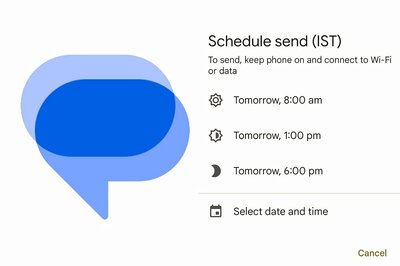
views
The newest iPhones—supposedly called the iPhone XS, the iPhone XS Max and the iPhone 9, will be unveiled at the keynote on 12 September. Whatever the naming scheme, the expectation is that there will be three new iPhones this year. Yes, that is the same as 2017. Last year was a landmark year in the iPhone’s evolution, with the iPhone X, and the expectation is that Apple will do more than just incremental updates.
The one on which there isn’t much doubt, apart from the unconfirmed naming, is the iPhone Xs. The “S” perhaps returns from the cyclical routine of iPhone updates—as seen when we jumped from the iPhone 6 to the iPhone 6s and the iPhone 7 to the iPhone 7s. While the 5.8-inch OLED display and the now iconic design of the iPhone X is expected to remain what it is, the innards should get a massive boost again. The excellent A11 Bionic will surely make way for what we can assume is the A12 processor. In many ways, the iPhone X’s successor will become the iPhone 8 of the upcoming line-up. And this is why.
The larger variant of the iPhone X’s successor is believed to the top of the line phone which Apple will launch this year. Some reports suggest it will be called the iPhone Xs Plus while some believe it will be called the iPhone Xs Max. If it indeed has to live up to its name, then a larger 6.5-inch screen would be the upgrade. Perhaps even the Apple Pencil support? If yes, then this could finally be the “iPhone Pro” rumors we had been hearing about for quite a few years now. The fine detail is that it’ll simply be a larger design of the iPhone X’s successor.
In the middle of these two phones will sit what is believed to be a lower priced, but not exactly one with a small screen, iPhone that has a 6.1-inch LCD display. This means that the current iPhone X’s screen size will be eclipsed by both new iPhone variants, and the iPhone X’s successor will become the smallest iPhone that you will be able to buy from the new line-up.
There are pricing expectations too. All said and done, the current pricing of the iPhone line-up will be continued. The iPhone 9 will replace the iPhone 8, the iPhone Xs will replace the iPhone 8 Plus and the iPhone Xs Max will replace the iPhone X in the product hierarchy.
This also means that the new iPhones will signal the end of the home button on iPhones, as we have known them. The way iOS 11 was designed, and the thinking behind the upcoming iOS 12 means you don’t really need the home button anymore. That could also perhaps be the direction in which the iPads are headed, with the next iteration.
This does pose the question—what happens with the Touch ID fingerprint sensor? At present, the iPhone 8 and the iPhone 8 Plus use the fingerprint sensor. There are two ways for Apple to deal with that. First, integrate the sensor either on the power key (like Sony’s Xperia phones) or put it on the back panel (every single Chinese phone maker is doing this).
Secondly, it might make sense to embed Touch ID under the display, the way some Vivo phones have already done—which means Apple will have that tech available. The camera will also see a significant upgrade, and that is something that Apple inevitably does with every new iPhone.
It is perhaps logical to expect that Apple will not have the same production challenges this year, as it did with the iPhone X last year.



















Comments
0 comment